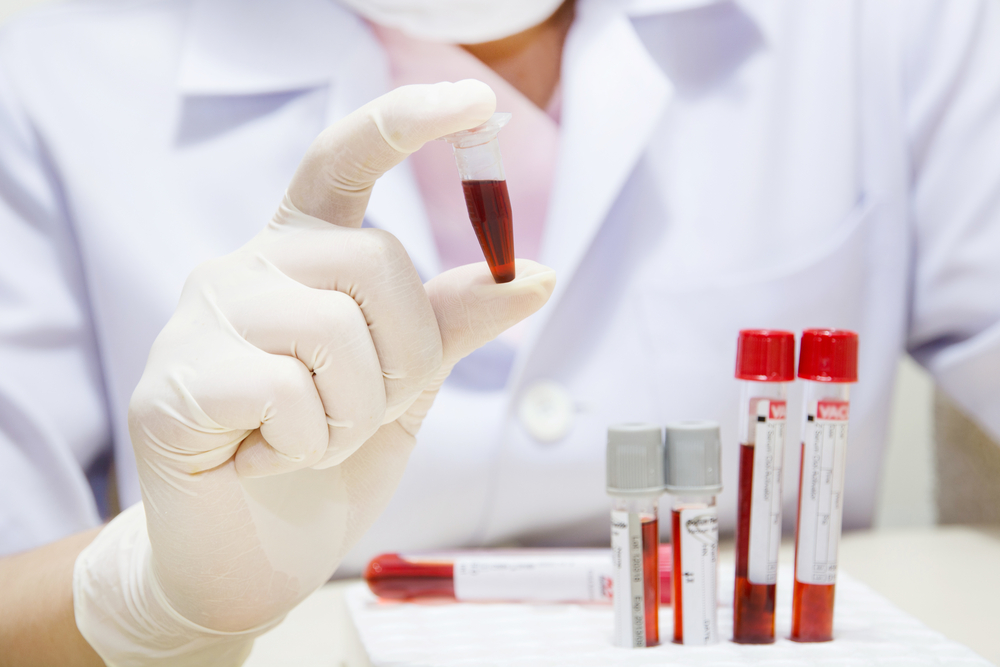KL-6 Protein Found to Be a Promising Biomarker for IPF Prognosis

A protein linked to lung inflammation, known as Krebs von den Lungen-6, or KL-6, was found to be a reliable biomarker for the prognosis of patients with idiopathic pulmonary fibrosis (IPF) and lung cancer, predicting IPF progression and indicating an individual’s response to treatment, an analysis shows.
The results showed that patients with persistently high blood levels of KL-6 tended to experience a progressive and significant decline in lung function during two years of follow-up.
In contrast, those with decreasing KL-6 levels did not experience a significant lung function decline.
The study, “Serum Concentrations of KL-6 in Patients with IPF and Lung Cancer and Serial Measurements of KL-6 in IPF Patients Treated with Antifibrotic Therapy,” was published in the journal Cancers.
KL-6 is a sensitive blood marker for lung inflammation and damage. For this reason, researchers have proposed that it may serve as a useful biomarker for interstitial lung diseases (ILDs), including IPF.
“No single reliable biomarker is available to predict disease progression or response to treatment,” the researchers wrote.
Previous studies have suggested that IPF patients who have high KL-6 levels in their bloodstream may have more severe disease and a worse prognosis, including lower survival rates.
However, no studies to date have focused on assessing long-term changes in KL-6 levels in IPF patients receiving Ofev (nintedanib), an approved anti-fibrotic therapy for the disease. Anti-fibrotic therapies work to slow the decline in lung function and reduce the risk of acute respiratory deterioration in people with lung scarring, known as fibrosis.
Comorbidities, or co-existing medical conditions, also are common in IPF patients and can negatively impact both quality of life and prognosis. Lung cancer, one of the most common comorbidities seen among those with IPF, has been shown to be associated with a lower survival rate in these patients.
Now, researchers at Siena University Hospital, in Italy, analyzed KL-6 levels in IPF patients who completed 24 months (two years) of treatment with Ofev. The team also sought to investigate the protein’s biomarker potential in patients with IPF and lung cancer (IPF-LC), in comparison to those with fibrotic hypersensitivity pneumonitis (FHP), pulmonary fibrosis associated with autoimmune diseases (PF-AD), and healthy people (controls).
A total of 142 patients — 86 men and 56 women — with interstitial lung diseases (ILDs) were included in the analysis. Among these individuals, who had a median age of 69, there were 10 patients with IPF, 12 with IPF-LC, 14 with FHP, and 22 with PF-AD, along with 12 healthy controls. Demographic characteristics, including age, gender, and smoking history, were similar in all disease groups.
The patients’ blood levels of KL-6 were measured before starting treatment with Ofev and after 12 months (one year) and 24 months (two years). Additionally, the team assessed changes in forced vital capacity (FVC), a lung function parameter that measures the total amount of air a person is able to exhale after a deep breath.
KL-6 blood levels were higher in IPF-LC patients than in healthy controls and in those with IPF, FHP, and PF-AD. However, no significant differences in KL-6 levels were found between IPF, FHP, and PF-AD patients.
The investigators also calculated a cut-off value for KL-6 levels — of 1,370 units per milliliter (U/mL) — that allowed them to distinguish IPF patients with and without lung cancer with a sensitivity of 83% and a specificity of 92%. Sensitivity is a test’s ability to identify those who truly have a condition, while specificity refers to its ability to detect those who do not.
IPF patients treated for 24 months with Ofev who had persistently high KL-6 blood levels tended to have a progressive and significant FVC decline during follow-up.
In contrast, those patients whose KL-6 levels decreased did not show a significant lung function decline.
“[The study] confirmed KL-6 to be a reliable prognostic biomarker, predictive of IPF progression and indicative of response to nintedanib treatment,” the researchers wrote.
“IPF patients treated with this drug for 24 months maintained stable FVC percentages and KL6 concentrations. KL-6 therefore also proved to be useful for monitoring antifibrotic therapy, besides enabling identification of the subgroup of IPF patients with lung cancer,” the researchers concluded.
According to the team, this was the first analysis examining KL-6 in patients with IPF and lung cancer.
“To our knowledge, this is the first study to monitor [blood] concentrations of KL-6 in a [group] of IPF patients with adenocarcinoma,” the researchers said.







